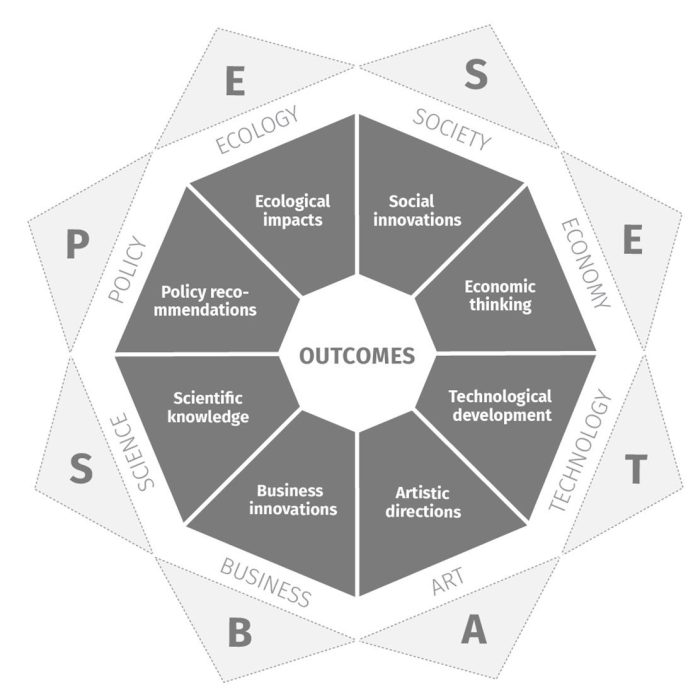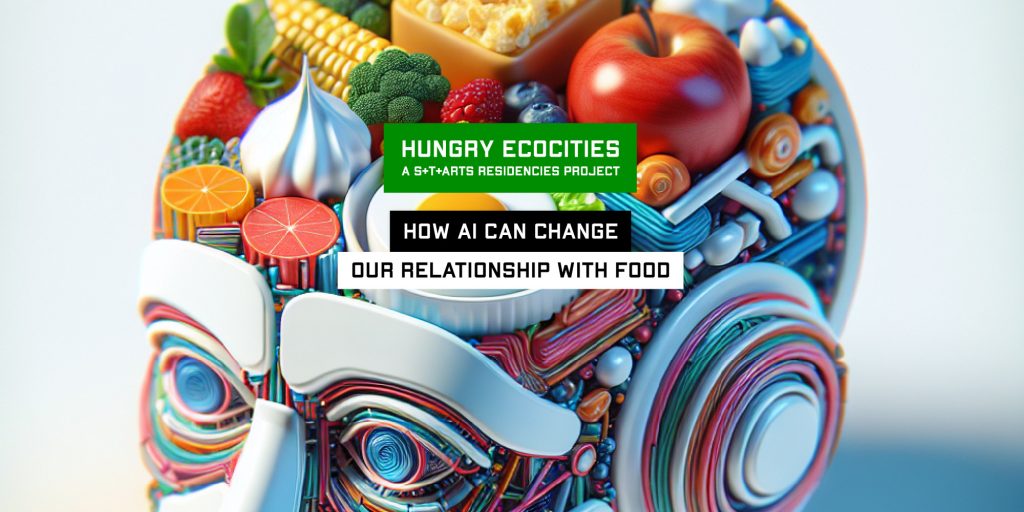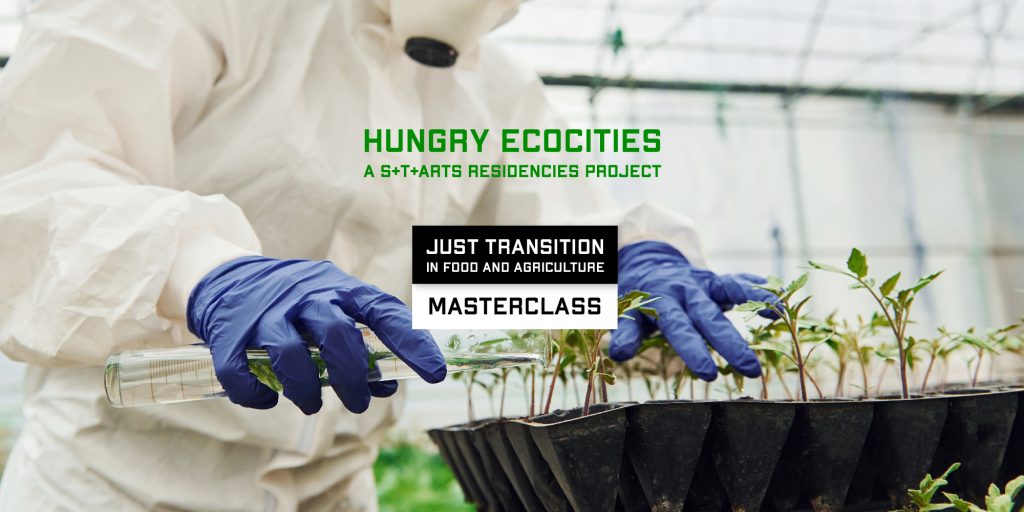Interview with In4Art
Welcome to our interview series with the partners running HUNGRY ECOCITIES. In this interview with Lija and Rodolfo Groenewoud van Vliet we will learn more about In4Art and their role in the project!
 | Lija and Rodolfo Groenewoud van Vliet are the co-founders In4Art, an independent Institute for Art-Driven Innovation, est. in 2015. After working as innovation managers and business developers for knowledge institutes, start-ups and corporates, they decided to dedicate their time to guiding curiosity and creating space for that kind of experimentation that drives responsible innovation. Their interest lies in exploring and prototyping possibilities of technologies and economics influencing our shorter- and longer-term futures of food, manufacturing, health and biodiversity. They invented and practice the Art-Driven Innovation methodology which is currently driving over 50+ international experimental programs and projects involving art, science, technology, and industry. |
Thank you Lija and Rodolfo for being with us today! Can you please share a brief introduction to In4Art, your main activities, interests and or values?
Sure! At In4Art, we set out to rethink the ideas of societal and economical structures or institutions by placing circularity, biodiversity restoration and inclusivity at the core of our efforts. We do this through our art-driven innovation method, where we design, create and nurture cross-disciplinary teams. We start with thought-provoking questions, guiding the exploration of responsible digital technology development and sustainable material use following either a ‘care path,’ prioritizing empowerment, safety, and transparency, or a ‘green path,’ emphasizing waste reduction, resource efficiency, and cleaner production, for responsible innovation. In4Art’s mission is to make art-driven innovation, resulting from artistic experimentation, a valuable addition to responsible innovation processes. Our aim is to generate actionable innovation proposals aligned with long-term objectives. We need success cases and continuously learning how this works in practice to do so, and Hungry EcoCities is such a rich project for us.
You have been involved in the inception of the project. Why is it important that a project like Hungry EcoCities exists?
It is generally acknowledged that there is an urgent need to transition to sustainable food systems, taking into account social and environmental food system issues. It is important to have these diverse perspectives and reflections on a system, that is so connected, complex and depleted. In Hungry EcoCities, digital technologies are used as a tool , lever or sonar to raising voice and add new senses through multidisciplinary collaborative projects between artists, universities and creative studios. By heavily basing the project on experiments and creating demonstrators, we trigger not only conversations, but also actively work towards testing and validation in the real environment. This effects both food practitioners as the public by guiding questions on the position of food in the world. This is much needed to enable responsible innovation in the food chain.
‘In4Art’s mission is to make art-driven innovation, resulting from artistic experimentation, a valuable addition to responsible innovation processes.’
What´s your role on the Hungry EcoCities project?
In4Art has multiple roles in the project. Foremost, we are the technical coordinator and safeguard the greater goals, ambitions, and progress of the project. We therefore collaborate with all partners to make the project as promising and interesting as possible. Next to that, we are currently involved in seven HTE– experiments as art-driven innovation mentor, which is closely linked to our ambitions to stimulate the uptake of these experiments and validate them in the real environments. Therefore, we are involved in the inception and realisation of HEC-lab development; a validation lab where opportunities for validation will be mediated for the various outcomes of the experiments. We make sure that the process input and outcomes are passed on to a larger network outside of our consortium and S+T+ARTS channels. Hence, in short, our role can best be described as a co-producer and co-director, leveraging the ties, potentials and insights developed by all the various consortium and core-team partners.
Central in your work is the PESETABS-diffusion model. How will these model be used in the Hungry EcoCities project?
Let us first shortly explain PESETABS 😊. PESETABS is a diffusion model developed by In4Art that explores eight directions for spill-over potential, where future impact can be created, and matches them to an ambition. The directions include policy, ecology, society, economy, technology, art, business, and science.

Each experiment project (both HTE and PPE) will go through a PESETABS analysis, where the outcomes and process insights will be analysed and scored on 4 criteria: problem assessment, innovativeness check, responsibility evaluation and readiness assessment. This process will be supported by the HEC-lab, leading to outcome project cards that could be used for opportunity scouting and follow-up development in the form of validation. We do acknowledge the experimental nature of our projects and that within this we can also fail, as long as we learn from it. In Hungry EcoCities, we will have 20 high-level artistic demonstrators that will contribute towards increased trust and acceptance of digital technologies in society and stimulate uptake of digital technologies across the agricultural sectors through art-driven development. We expect that at least 10 experiments will be successful, in the sense that the outcome is surprising, leading to at least 5 innovation spillover proposal trajectories after Hungry EcoCities. The PESETABS diffusion model would provide guidance and support in how this would lead to valuable outcomes that can be launched for sustainable innovation in agriculture.
Central in your work is the PESETABS-diffusion model. How will these model be used in the Hungry EcoCities project?
All projects reflect in different ways on how the future food chain should or could evolve. The project of SYMPOSIO, where we work together with the artist Yiannis Kranidiotis, is looking primarily at the final phase of the food chain: how new types of cutlery can empower chefs, households, and consumers to have well balanced food intake, but also limit the waste. To come to these new forms, the experiment is taking an interesting approach of evolutionary AI, by creating a new breeding machine that is not prewired by our knowledge of using bowls, knifes or sticks, but uses cultural and health insights. This way, the evolutionary AI tableware algorithm will expand our humans ‘mental model for eating habits. The rethinking of eating tools is an intriguing concept, which acknowledges also the cultural constructs related to food consumption. Combining the artistic prototyping capabilities of Yiannis, the artistic embedment and direction towards local influence of Studio Other Spaces and the new perspective on AI, we expect this experiment to deliver promising spill overs for dietary shifts that support health, sustainable and personalised nutrition. It could change the way we think about food.
This project has received funding from the European Union’s Horizon Europe research and innovation programme under grant agreement 101069990.

